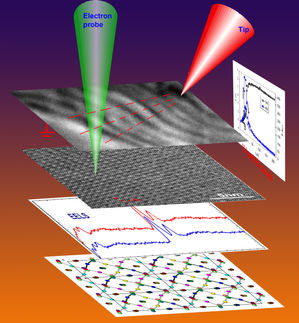Nanotechnology in the focus of consumer health protection
Around 200 participants in the sixth BfR Consumer Protection Forum
In which foods and products are nanoparticles used? In what ways do consumers come into contact with nanoparticles? Does this lead to health risks? How can they be assessed? What information do consumers need about nanotechnologies? At the sixth BfR consumer protection Forum at the Federal Institute for Risk Assessment (BfR) in Berlin the list of questions to be addressed was long. Around 200 participants from political circles, science, industry, public institutions and non-governmental organisations discussed possible answers from the angle of "nanotechnology in the focus of consumer health protection". The participants all agreed that extensive research is required. There was also an urgent need for a uniform definition of nanotechnology. However, even with a definition of this kind it would not be possible to undertake generally valid risk assessment. "The assessment of potential health risks from nanoparticles or nanomaterials is only possible at the present time in individual cases", said BfR President Professor Dr. Dr. Andreas Hensel.
As confirmed by BfR surveys, consumers expect nanotechnologies to simplify their daily lives. They mostly think of cleaning products, impregnating agents and functional textiles. By contrast, they are more sceptical about nanoparticles in food. According to comments from the food industry at the BfR Forum, no nanoparticles have been used in food up to now in Germany. In future, nanotechnology could be used in “intelligent” food packaging to indicate how long a food has been packaged and whether the prescribed temperature was exceeded during storage. Whether and, if so, on what scale nanoparticles can migrate from packaging of this kind to food and what then happens to these particles during recycling has not yet been fully elucidated. To ensure that the manufacturers of this type of packaging comply with their obligation to place safe products on the market, research gaps will have to be closed.
In comparison, there has been substantial research on the effect of nanoscale substances on the human skin. The minute particles are not able to penetrate healthy skin - one reason why their use in UV filters in sunscreens is permitted. By contrast, not enough data are available on the effect of nanoparticles in the gastrointestinal tract. We do not know whether nanoparticles migrate from there to blood and other organs, and could then trigger effects. We do know that nanoparticles can reach deep parts of the lungs via the respiratory tract. To establish the effect they have there, research is needed on each individual substance.
In any case, it is not possible to undertake scientific risk assessment of all nanotechnologies. The structures and materials in which they are used are too diverse. For example nanoparticles processed in materials or substance mixtures may be stored with other molecules. This would mean that nanoscale particles would not reach the consumer.
Food and product control authorities also face major challenges in conjunction with the presence of nanoparticles in consumer products: standardised test methods, the corresponding equipment and staff to operate it are needed in order to be able to monitor product safety.
Topics
Organizations
Other news from the department business & finance
These products might interest you
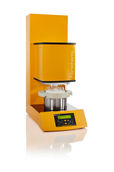
FIBRETHERM by C. Gerhardt
Automatic Fibre Extraction for Feed Analysis
FIBRETHERM from C. Gerhardt: Efficient – Precise – Method-Compliant
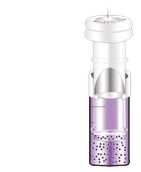
Mini-UniPrep™ by Cytiva
Improved HPLC Sample Preparation
Save 66 % sample preparation time and reduce costs by 40 %
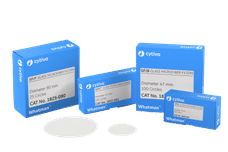
Glass and quartz microfiber filter by Cytiva
Request a glass microfiber sample pack to meet your battery development needs
Delivering efficient and consistent results
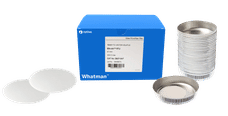
GF/C and 934-AH RTU (Environmental) by Cytiva
Meet wastewater regulations with the right filter
Streamline lab operations and ensure high-quality results

VICI Jour Katalog 15INT by VICI
The VICI Jour Catalog - Accessories for (U)HPLC and Liquid Handling
Capillaries, Tubing, Fittings, Filters, Safety-Products, Tools and much more

Hahnemühle LifeScience Catalogue Industry & Laboratory by Hahnemühle
Wide variety of Filter Papers for all Laboratory and Industrial Applications
Filtration Solutions in the Life Sciences, Chemical and Pharmaceutical Sectors

Whatman filtration product guide by Cytiva
New filtration catalog - a wealth of information on 286 pages
Discover the perfect filters for your laboratory application

Get the chemical industry in your inbox
By submitting this form you agree that LUMITOS AG will send you the newsletter(s) selected above by email. Your data will not be passed on to third parties. Your data will be stored and processed in accordance with our data protection regulations. LUMITOS may contact you by email for the purpose of advertising or market and opinion surveys. You can revoke your consent at any time without giving reasons to LUMITOS AG, Ernst-Augustin-Str. 2, 12489 Berlin, Germany or by e-mail at revoke@lumitos.com with effect for the future. In addition, each email contains a link to unsubscribe from the corresponding newsletter.
